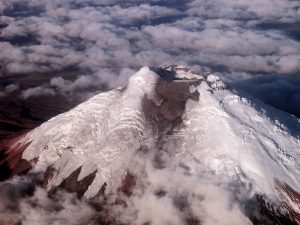 The ancient goddess of snow and ice, Poliahu, long content to live in the icy regions of the world, resting in the snows of high mountains and in the great ice masses of the North and South Poles, awoke. She felt the heat of a warming Earth. Angry that her ice kingdom was melting, her glaciers breaking up and icebergs drifting away to the great salt seas, she blamed her archenemy and rival, Pele, goddess of volcanic fire, and vowed revenge.
The ancient goddess of snow and ice, Poliahu, long content to live in the icy regions of the world, resting in the snows of high mountains and in the great ice masses of the North and South Poles, awoke. She felt the heat of a warming Earth. Angry that her ice kingdom was melting, her glaciers breaking up and icebergs drifting away to the great salt seas, she blamed her archenemy and rival, Pele, goddess of volcanic fire, and vowed revenge.
Poliahu was mistaken; Pele was not to blame for the ice melt, but there was no one to tell Poliahu otherwise. She came on Pele unaware and attacked her with a full strength of ice and snow, covering the mythic volcano on Kahili, the land beyond the horizon where Pele dwelled—a place of spirit and primal power. Poliahu plugged up the volcano’s fiery, steaming cone with a dense glacier. Soon the land around the mountain became a frozen wasteland. Poliahu remained on Kahili, among the folds of her glacier, watching and waiting. At the first puff of smoke, she swore to strike again.
Pele, taken by surprise, was now captive under layers of ice and snow. Barely breathing, she warmed herself with the glow from the earth’s core. Volcanoes around the world cooled and the earth  surrounding them froze, burying towns and villages in a blanket of ice. Pele struggled to fight her way out of her prison and as she did, the earth trembled, oceans rose, earthquakes toppled buildings, while millions fled to open fields. Tent cities sprang up around the globe—everyone became a refugee with nowhere to turn.
surrounding them froze, burying towns and villages in a blanket of ice. Pele struggled to fight her way out of her prison and as she did, the earth trembled, oceans rose, earthquakes toppled buildings, while millions fled to open fields. Tent cities sprang up around the globe—everyone became a refugee with nowhere to turn.
